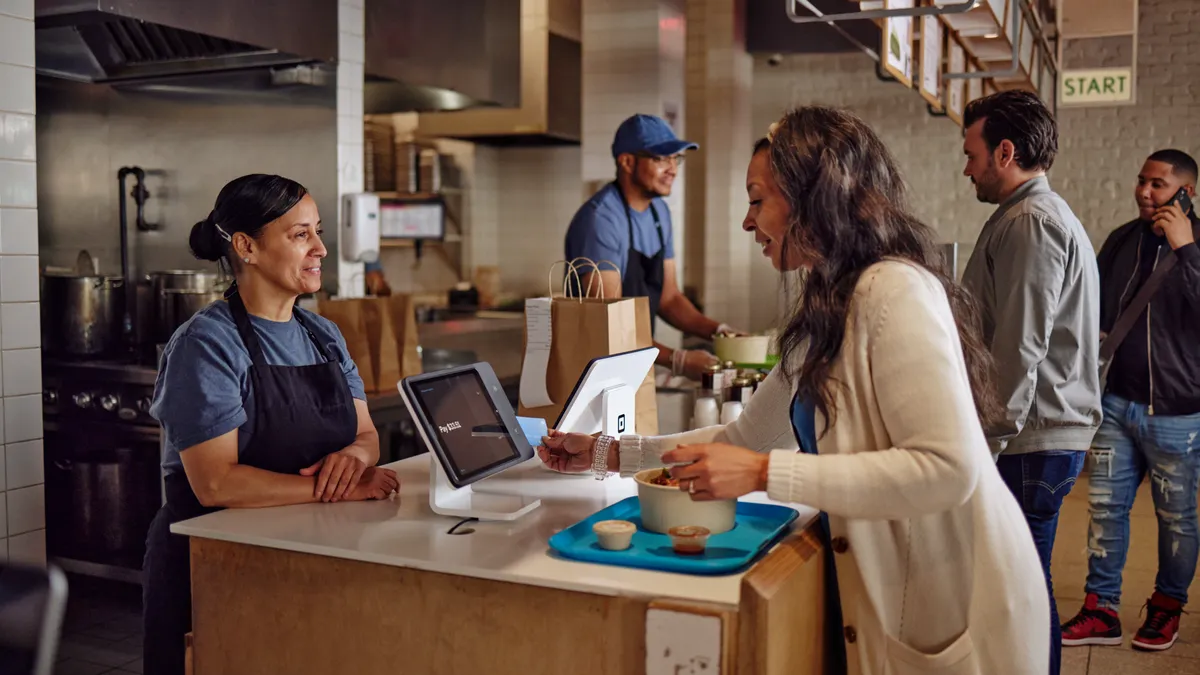For many operators, AI and automation are the stuff of headlines and hype cycles – not necessarily a tool to add to your restaurant counter. However, as both a restaurateur and a leader in the restaurant technology space, I’ve seen how AI can meaningfully help restaurant businesses, albeit in smaller, incremental ways, no matter their size or number of locations.
When my business partner and I first founded Cambridge Street Hospitality Group, I quickly realized the role that technology had in increasing my bottom line in a meaningful and powerful way – though back then, it was more about switching from paper to digital. The process of opening and beginning to run a restaurant crystallized the importance that technology had in improving my business metrics as well as the experiences of staff and guests alike. Now that I also lead Square’s food and beverage business, I see the power that AI and automation will also have in transforming restaurant businesses to be smarter and more nimble while still serving up great food and community.
The reality is that running a restaurant right now is hard – and as we saw with the pandemic and the switch to online ordering, businesses will make the shifts they need to stay resilient. With ongoing worker shortages, rising costs of goods and labor, and increased customer expectations, restaurants will flourish if they’re able to begin incorporating AI now.
Small efficiencies through AI can improve your bottom line
Restaurants are, in a way, highly complex mini factories – they’re heavy on process, with raw goods coming in the door and finished goods landing on people’s plates. There are a dizzying number of teams and people – and there are many repetitive tasks throughout that process.
Automation can streamline the rote. In the front-of-house, it can handle the phone lines for reservations and pick-up orders. In the back-of-house, it can ensure cooking and prep stations are optimized, that tickets are being routed to the right stations while producing food at a good rate, and that the right amount of staff is working. For the back office, it can interpret and handle paperwork like accounting, invoices and managing banking and bills. This is all about the question, “Can I afford this purchase right now?” and answering it with confidence.
Over time, personalization will be a key use case for AI
A key – and underrated – advantage to using AI is personalization. Guests often ask servers for recommendations – what should they order? At some point in the future, AI in restaurants could give a high-confidence answer that a certain dish will rock a diner’s world based on data about their preferences, interests, time of day, and more. With this sort of automated personalization, guests could be more likely to enjoy their meals and become repeat customers, and restaurant businesses would be able to provide more customized and fulfilling experiences.
Right now, though, restaurants can use generative AI to improve and personalize marketing – emails and promotions based on guests’ preferences and dining trends. Additionally, automated suggested replies to correspondences with consumers can keep restaurants connected to their clientele at all times, even if they’re not currently open for business.
With new technologies, measurement of their impact is key
As I both develop and evaluate technology, I keep in mind that tech investments need to either save time or money or they need to help grow your revenue. With smaller, iterative AI updates, though, it is easier for restaurants to instantly start seeing the effects of greater efficiency – and usually without any additional costs incurred.
As you begin to incorporate AI and automation into your restaurant business, keep an eye on your metrics and your new tech’s impact – and hopefully, you’ll see smoother operations, happier staff and guests, and a better bottom line.
Again, these are small efficiencies, but they can add up to something bigger – and what was once an advantage that was only available to larger chains is now available to restaurants of any size due to AI.
While some tasks can be made simpler by automation, restaurants are always going to need people – guests are expecting hospitality (and humanity), and even automated concepts like Sweetgreen’s still have workers loading the machines and ensuring they’re running smoothly.










